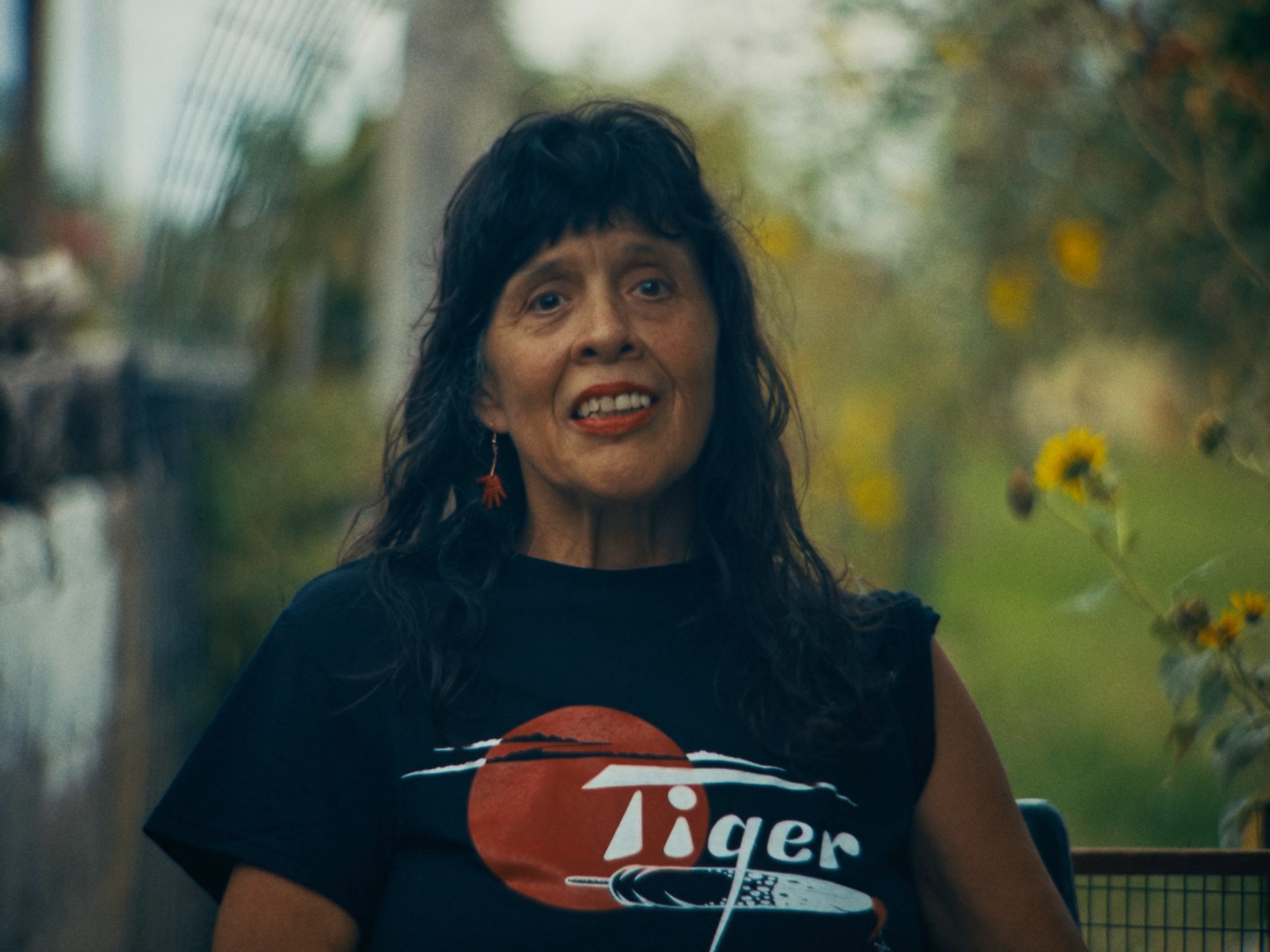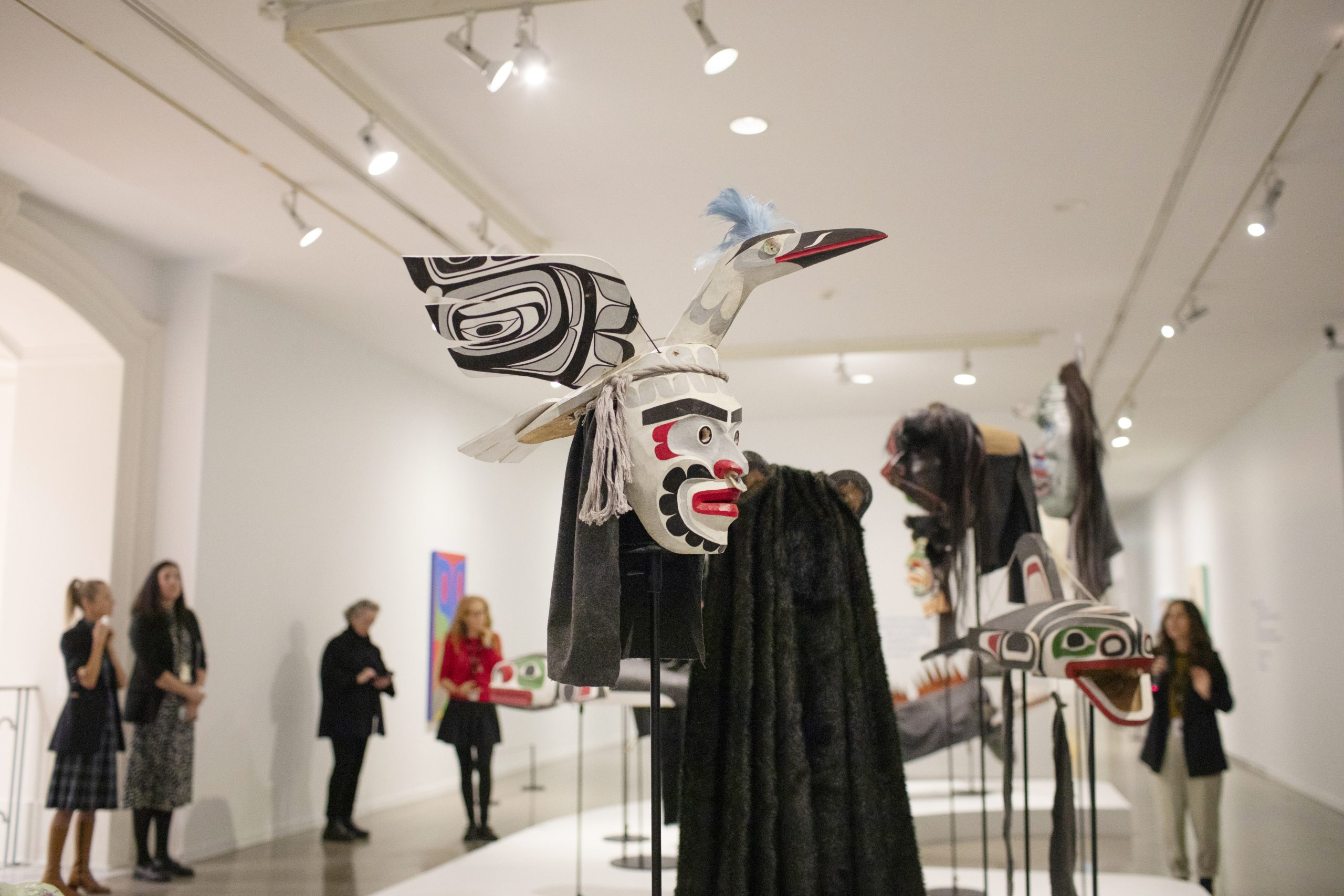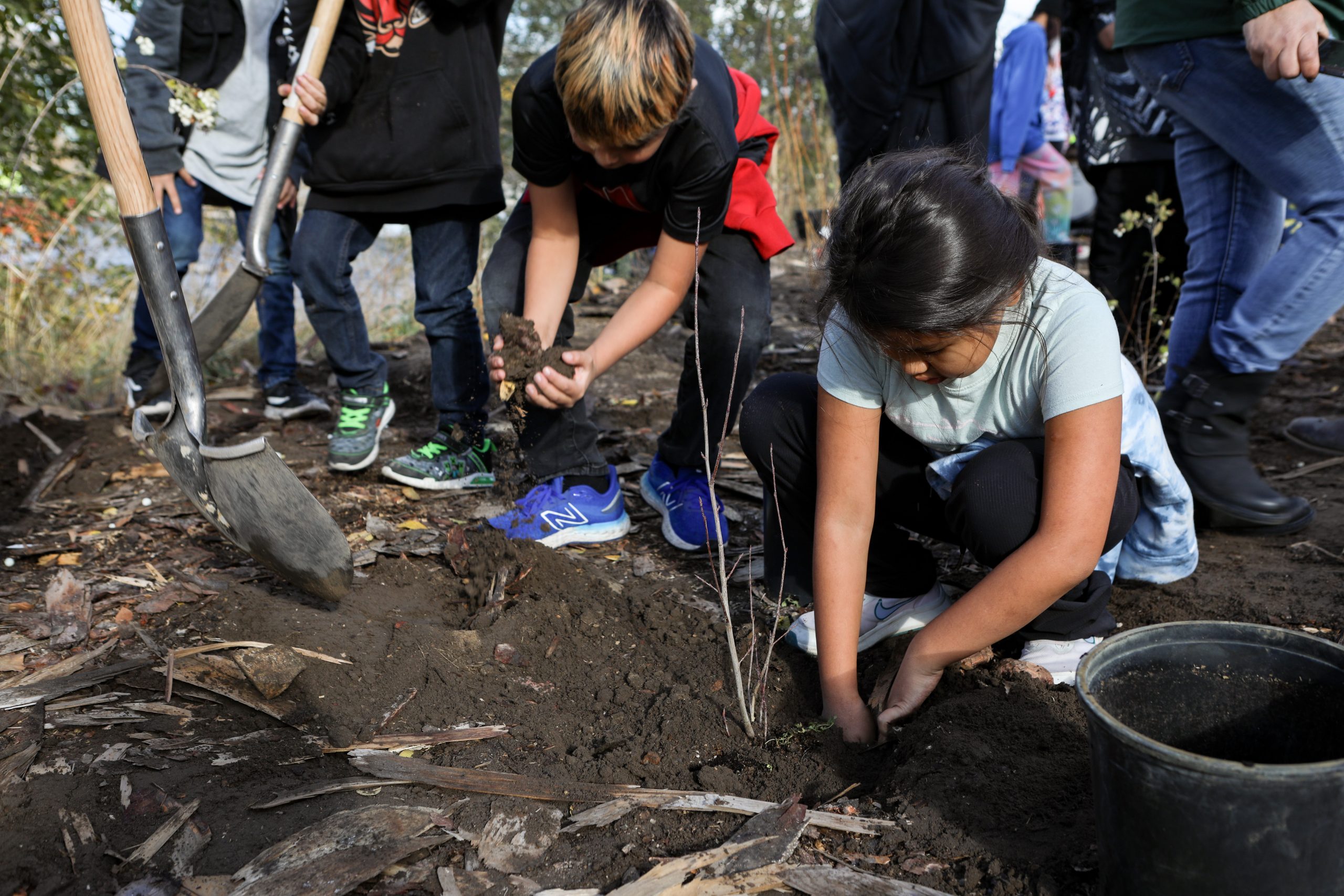Indigenous practices are the future — and past — of wildfire prevention
Thousand-year-old practices are at the core of wildfire mitigation efforts in the Westbank First Nation Community Forest.

For nearly six months in 2021, the Mount Law wildfire near West Kelowna scorched 976 hectares of land. Igniting approximately two kilometres away from the municipality on Aug. 15, the wildfire burned for over 19 days before crews contained the spread on Sept. 3.
Miraculously, when the smoke cleared, Central Okanagan Emergency Operations reported the fire inflicted significant damage to only one structure.
Favourable weather and dedicated firefighters managed to control the blaze, but the groundwork for keeping the area relatively unscathed was laid by Westbank First Nation (WFN) years before the first tree caught flame.
Hand-treatment mitigation work — informed by traditional practices — conducted between 2015 and 2016 in an area of the Westbank First Nation Community Forest (WFN-CF) ultimately slowed the Mount Law wildfire’s spread and reduced its intensity. This helped to prevent it from extending into the neighbouring community of upper Glenrosa. Crews at Ntityix Resources LP (NRLP), a WFN-owned company responsible for managing the community forest, carried out the mitigation work.
This boots-on-the-ground approach to wildfire mitigation is a part of syilx (Okanagan) culture and has been around for “years and years and years,” according to WFN councillor and NRLP president Jordan Coble.
“It’s been alive since the beginning, and it’s something that we’ve been doing for thousands upon thousands of years,” Coble said.

Keeping fire on the ground
Mitigation work involves removing ladder fuels and surface fuels to help space out mature trees. Each tree is pruned at least two to three metres above its base so fire can’t carry flames up the branches and spread to surrounding trees. Additionally, crown contact between mature trees is thinned, reducing the chance of fire jumping between them.
“It’s not going to stop the fire, but what we want to do is […] get [a fire] back onto the ground, not in the crowns of the trees,” Dave Gill, the general manager of WFN-owned NRLP, said.

Younger trees can also act as ladder fuels, giving fire more opportunities to reach the crowns of older trees. Those ladder fuels, as well as surface fuels — whether it be the remnants of trimmed branches and crowns, or any debris lying around — are gathered, piled and burned.
“What that sets us up for in the future is to do more controlled burns at a more frequent level in these areas that we treat,” Gill said. “That way, we can keep the fire on the ground where it should be.”

In the past, Coble said similar practices of spacing out and thinning trees also helped syilx communities with food management, specifically when it came to hunting animals.
“If we just clear out a path for them, well they’re more likely to walk that path, so instead of chasing the animals out in the woods, the deer and the moose will come to you,” he said.
Coble said his expertise comes from spending time with Elders and learning about the lands and traditional practices.
“Bringing that into our contemporary practices, creating values out of that and then ensuring our processes meet those values, that’s where my expertise comes in,” Coble said. “It’s not on the forestry level — it’s on the traditional respect level.”
A collaborative effort
A 2020 study conducted by the faculty of forestry at the University of British Columbia emphasized the benefits of collaboration between local stakeholders and First Nations when managing a community forest.
It concluded that community forest approaches to wildfire mitigation “illustrate the need for extensive trust-building and strong relationships between Community Forests, Indigenous communities, provincial government officials, fire scientists and other local stakeholders.”
The future of wildfire management, the study states, is refocusing management with a fire lens, as well as “restoring fire to the land as an ecological and cultural process and as fuel hazard reduction.”
More importantly, “increasing collaboration between communities, tenure holders, government agencies and First Nations” was shown to be the best way forward.
The WFN-CF was first designated as a community forest in 2004 through a pilot agreement between WFN and the British Columbia Ministry of Forests. It covers over 46,000 hectares and is divided into two parcels: one located west of West Kelowna and Peachland, and another situated northwest of the Big White Ski Resort.

As opposed to a volume-based forest tenure, Gill said a community forest is an area-based forest tenure, so WFN and NRLP have a defined area in which they can operate.
“WFN has exclusive harvesting rights within that area, so we can do all the planning,” he said. “The area-based forest tenure allows us to actually manage it the way the community would like to see it managed.”
According to Gill, several local stakeholders collaborated in 2020 to strategize WFN-CF’s wildfire risk management plan. Parties identified areas within the community forest where wildfire mitigation efforts should be conducted, prioritizing those in close proximity to life and property.

“This type of plan is meant to protect a community that has been built in the Central Okanagan over the past 70 to 80 years that historically wasn’t there,” he said. “We have surface fuels adjacent to all these homes.”
Taking fire out of the ecosystem
Traditionally, according to the Okanagan Nation Alliance (ONA), of which the WFN is a member, syilx people would maintain their forest and grassland ecosystems by annually conducting cikilaxwm, as it’s known in the nsyilxcen language, which is a low-intensity, controlled burn.
Gill explained that practice was discontinued during settler colonialism, replaced with the reactionary wildfire strategies still used today.
“Because we’ve more or less taken fire out of the ecosystem for the last 100 years, one thing that B.C. became very, very good at was fighting fires,” Gill said. “Any fire that would start would be put out immediately. A result of that […] was an accumulation of woody debris in the forests.”

Combined with the impacts of climate change, the ONA said today’s approach of reacting to fire only when it becomes active has paved the way for longer and more intense wildfires.
“When you look around the forests now, it didn’t look like that hundreds of years ago,” Coble said. “Yeah, we’ve had lots of fires here in the Central Okanagan […] but none of those fires would’ve been so massive had we been able to carry out our traditional fire-burning practices.”

There are now efforts being taken to reinstate traditional and cultural burns not only within areas of the WFN-CF, but across the Okanagan in syilix territories as well.
“Where we want to be in the future […] brings in that Indigenous knowledge in order for us to carry out those cultural burns that will be important in a longer term,” Gill said.
“We want to look at things seven generations from now.”
Thinking seven generations ahead
When making decisions, Gill said the community is consulted. Elders and knowledge-keepers are always reminding him to picture what the land will look like in the distant future.
“Our [seven generation] plan is always going to be a plan — a working plan, if you will. It’s always going to be evolving as the community evolves, as our knowledge evolves and as climate evolves,” he said.

For Coble, he said thinking about the future and having a seven-generation land stewardship model not only benefits the people of tomorrow but has health benefits for the community and the land today.
“Stewardship is working with what we know for thousands of years to ensure that those resources are there for future generations. But not just for the people — it’s for the animals, it’s for the water, it’s for the land itself,” he said.
“It’s an interconnected relationship between people’s responsibility to fix the things that have [been] broken over the years, while ensuring naturalness is able to reclaim those territories.”
Coble added he doesn’t believe a community forest can properly operate without an Indigenous perspective, because Western models don’t incorporate the essence of community.
“When I think about community, it’s not just the people that are benefiting from the decisions that are being made,” he said. “It’s the impacts of the land in and of itself. If you want to have a community forest, you have to be making decisions that are for the betterment of the actual resources that you’re looking to harvest and generate a revenue from.”
“Until you’re looking at it from an Indigenous lens, you’re not really doing it right.”

Changing the future of forest management
In October 2021, nearly a month after the province’s wildfire season came to an end, the BC Community Forest Association (BCCFA) selected WFN-CF as the recipient of the 2021 Robin Hood Memorial Award for Excellence in Community Forestry, citing the community forest’s leadership in wildfire risk reduction.
Susan Mulkey, manager of communication at the BCCFA, said WFN is changing the paradigm of forest management.
“They’re incorporating First Nations values and really looking at the forest landbase through a different lens than [a focus on timber values]. They’re looking at the land from an Indigenous perspective ” Mulkey said.
“They’re incorporating the plants, the trees, the animals [and] Indigenous use of fire for prescribed or controlled burns.”
While Gill acknowledged there isn’t a cookie-cutter approach to managing a community forest and developing a wildfire mitigation plan, he said the recipe is to gather local stakeholders and First Nations to come up with a unique strategy that reflects community needs.
He further emphasized the importance of incorporating an Indigenous perspective, not only for managing a community forest but for developing a specific wildfire mitigation plan.
“Especially as we get through this initial round of urgent wildfire mitigation and move into a longer-term focus for fire management across the ecosystem as a whole,” he said. “That’s where you’re going to really need that Indigenous knowledge.”

All community forests, he continued, can benefit from the Indigenous perspective of looking forward.
“It’s looking at all values and understanding that all those values are connected, that you’re not managing that forest for one particular value in one particular location,” he said. “You’re managing for multiple values all the time. Everything is interconnected and everything depends on each other.” [end]
This article is part of the Forests for the Future solutions series, a partnership between The Discourse and IndigiNews.
Protocol: According to nsyilxcən language keepers, there are no capitalizations in the spellings of any nsyilxcən words. In an egalitarian society, capitalization insinuates there is something that holds more importance over another, and that does not fall in line with syilx ethics.
Author
Latest Stories
-
‘Bring her home’: How Buffalo Woman was identified as Ashlee Shingoose
The Anishininew mother as been missing since 2022 — now, her family is one step closer to bringing her home as the Province of Manitoba vows to search for her
-
Short film showcases the inspiring story of Dana Tiger — and a family design legacy
Muscogee artist’s life, work, and fashion business are the subject of Loren Waters’ Sundance-acclaimed documentary ‘Tiger’












